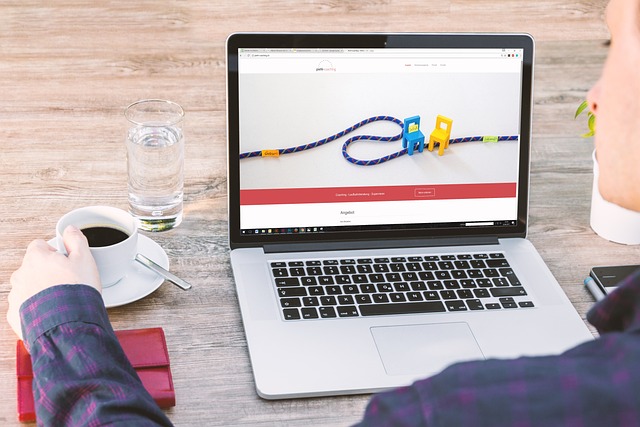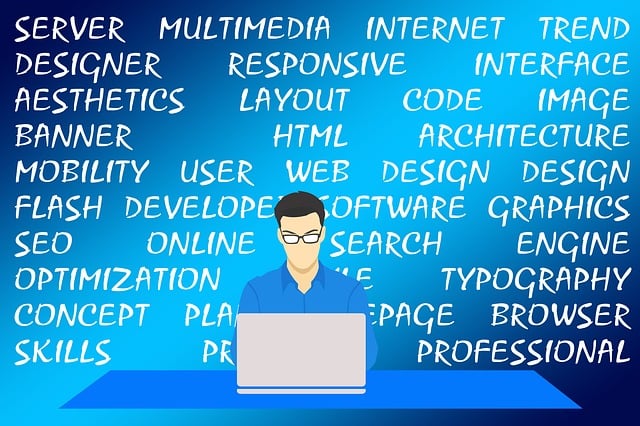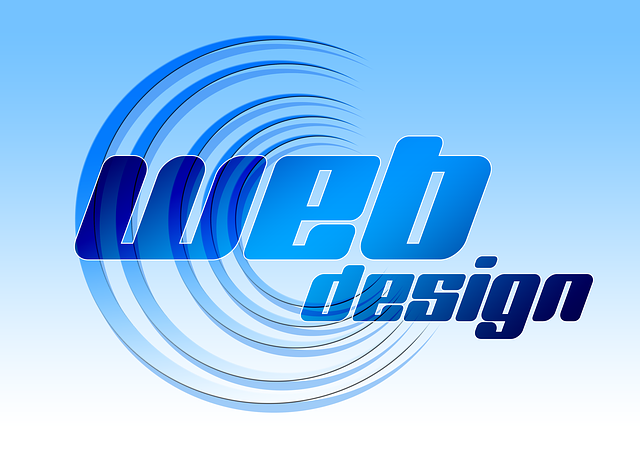The latest web design trends are driven by immersive technologies like VR and AR, transforming user experiences with dynamic 3D explorations and real-world interactions. Micro-interactions enhance engagement through subtle animations, while voice search, facilitated by VUI, optimizes content for voice assistants. Minimalism is redefined with balanced aesthetics and interactivity, and personalization at scale uses AI to deliver tailored content. Scrollytelling combines scrolling and storytelling for immersive narratives, and 3D design offers unique visual experiences. Custom animations captivate users, while accessibility standards ensure inclusivity in these evolving trends.
The latest web design trends are reshaping online experiences, pushing interactivity and user engagement to new heights. From immersive virtual reality (VR) and augmented reality (AR) experiences to subtle micro-interactions, designers are leveraging cutting-edge technologies to captivate audiences. This article explores these dynamic trends, including voice user interfaces (VUI), minimalist reinvention, personalized layouts, scrollytelling, 3D design, interactive branding, and enhanced accessibility tools, all aimed at creating engaging, accessible, and visually stunning digital environments.
The Rise of Immersive Experiences: Virtual Reality and Augmented Reality in Web Design

The latest web design trends are ushering in a new era of interactive experiences, with virtual reality (VR) and augmented reality (AR) technologies leading the charge. These immersive technologies are transforming how users engage with digital content, offering a glimpse into a future where the line between physical and virtual worlds blurs. Websites are no longer static; they’re becoming dynamic environments that encourage active participation.
Web designers are leveraging VR to create 3D experiences, allowing users to explore digital spaces as if they were there in person. Meanwhile, AR enhances real-world interactions by overlaying digital information on physical surroundings, opening up possibilities for creative storytelling and unique user interfaces. As these technologies mature, we can expect even more innovative ways to engage audiences, making web design more interactive, captivating, and future-forward.
Micro-Interactions: Enhancing User Engagement with Tiny Animations

In the realm of the latest web design trends, micro-interactions have emerged as a powerful tool to enhance user engagement. These tiny animations, though subtle, play a significant role in creating immersive digital experiences. By integrating micro-interactions into web interfaces, designers can add a layer of interactivity that captures users’ attention and encourages deeper involvement. A simple animation—like a subtle hover effect or a playful button transition—can make the user interface feel more alive and responsive.
This trend leverages the power of human perception, where even minor visual cues can significantly impact user satisfaction. When designed thoughtfully, micro-interactions provide feedback to users, making interactions more intuitive and enjoyable. As web design continues to evolve, these small animations are not just frills but essential elements in creating engaging, modern websites that stand out in today’s digital landscape.
Voice User Interface (VUI): Optimizing Websites for Voice Search and Assistants

As voice search continues to gain popularity, Voice User Interface (VUI) is becoming a significant aspect of the latest web design trends. Optimizing websites for voice assistants and search requires a shift in how we interact with digital content. Designers are incorporating more natural language processing, enabling users to communicate with websites using voice commands rather than text keyboards. This trend enhances user experience, especially on mobile devices, where hands-free interaction is increasingly valuable.
Web developers are integrating VUI by focusing on clarity, conciseness, and context awareness in their content. Websites are being crafted with specific voice queries in mind, ensuring that information is easily retrievable for voice assistants like Siri, Alexa, or Google Assistant. This involves structuring data in a way that allows virtual assistants to understand user intent quickly, resulting in more accurate search results and improved conversion rates.
Minimalism Reimagined: Clean, Simple Designs with a Twist

In the realm of interactive web design, the latest trends often push boundaries while staying true to simplicity. Minimalism, once a staple for its clean aesthetics, is now being reimagined with a modern twist. Today’s users appreciate uncluttered spaces, but they also crave interaction and engagement. Thus, designers are crafting interfaces that maintain the essence of minimalism—clean lines, ample white space, and concise layouts—while introducing subtle animations, interactive elements, and micro-interactions to captivate visitors.
This approach not only enhances user experience but also aligns with the current focus on intuitive navigation and efficient data presentation. By combining simplicity with interactivity, these latest web design trends create visually appealing and highly functional digital spaces that cater to modern users’ expectations.
Personalization at Scale: Adaptive and Responsive Web Layouts

In today’s digital landscape, personalization at scale is a defining aspect of user experiences, and this trend is directly reflected in the latest web design trends. Adaptive and responsive web layouts are no longer just about ensuring websites look good on various devices; they are now engineered to deliver tailored content and interactions based on individual user behaviors and preferences. Through advanced technologies like machine learning and AI, websites can dynamically adjust their structure, content, and style to provide a unique experience for every visitor.
This evolution goes beyond simple responsiveness, aiming to create immersive environments that engage users on a personal level. For instance, personalized product recommendations, dynamic content loading based on user interactions, and real-time language translation are some of the ways web designers are leveraging adaptive layouts to enhance user satisfaction and drive conversions. As these technologies mature, we can expect even more sophisticated and nuanced personalization in the future, solidifying their place as a core component of the latest web design trends.
Scrollytelling: Creative Scroll-Based Navigation for Engaging Storytelling

In the realm of interactive web design, scrollytelling has emerged as a captivating trend that combines scrolling with storytelling to create immersive experiences for users. This innovative approach transcends traditional navigation by integrating narratives into the user journey, making interactions more engaging and dynamic. By leveraging scroll-based navigation, designers can guide visitors through stories, revealing content in a natural, sequential manner that mimics reading a book or watching a film. The latest web design trends showcase scrollytelling as a powerful tool for captivating audiences, especially on longer webpages where maintaining user interest is paramount.
Creative implementation of scrollytelling involves strategic placement of visual cues, interactive elements, and narrative twists that encourage users to explore further. This trend not only enhances user engagement but also offers designers a flexible medium to showcase their creativity. By intertwining visuals and text with scroll-triggered animations, developers can craft narratives that adapt to the user’s pace, making each scroll an exciting revelation. As web design continues to evolve, scrollytelling stands out as a latest web design trend that promises to transform how we interact with digital content, turning mere browsing into immersive adventures.
3D Design and Modeling: Bringing Dimensional Beauty to Websites

In the realm of interactive web design, 3D design and modeling are emerging as powerful tools to captivate audiences and elevate user experiences. The latest web design trends heavily emphasize adding depth and dimension to websites, transforming flat interfaces into immersive visual landscapes. By leveraging advanced technologies, designers can create stunning three-dimensional elements that enhance navigation, product presentations, and overall aesthetics.
3D models offer a unique opportunity to showcase products or services from various angles, providing users with an engaging and interactive experience. This trend not only enhances visual appeal but also allows for more intuitive user interactions, making complex information easier to digest. As web design continues to evolve, embracing 3D design techniques can help businesses stand out in the crowded digital landscape and create memorable online experiences that resonate with modern users.
Interactive Elements as Visual Branding: Enhancing User Experience through Custom Animations

In today’s digital landscape, interactive elements have emerged as a powerful tool for visual branding, significantly enhancing user experiences. By integrating custom animations into web design, developers are creating visually captivating and engaging interfaces that leave lasting impressions on users. This trend is at the forefront of the latest web design trends, where movement and interactivity are no longer accessories but core components defining successful websites.
Custom animations add a layer of sophistication and dynamism to static elements, making user interactions more intuitive and enjoyable. Whether it’s a smooth transition between pages, animated icons that provide feedback, or dynamic content loading, these interactive features keep users engaged and foster a sense of immersion. As the latest web design trends continue to evolve, leveraging custom animations can set websites apart by delivering memorable experiences that resonate with visitors.
Accessibility in Focus: Designing for a Broad Audience with Interactive Tools

In the realm of interactive web design, one of the most significant aspects gaining traction in the latest web design trends is accessibility. It’s no longer just a best practice; it’s an essential component that ensures digital spaces are inclusive and usable by everyone, regardless of their abilities or limitations. With powerful interactive tools at our disposal, designers now have the ability to create experiences that cater to a diverse audience. These tools enable us to implement features like dynamic text resizes, color contrast adjustments, and keyboard navigation, making websites accessible for visually impaired users.
Furthermore, accessibility considerations extend beyond visual impairments. They encompass a broad spectrum of disabilities, including motor control issues, auditory impairments, and cognitive differences. Interactive design elements can be tailored to accommodate these needs through features like voice command functionality, text-to-speech capabilities, and clear, concise language that promotes comprehension. By embracing these latest web design trends, we’re not only enhancing user experience but also ensuring that our digital creations are a testament to inclusivity and accessibility for all.
